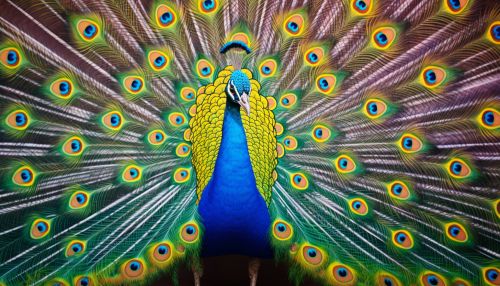Animal coloration
Introduction
Animal coloration is a complex and multifaceted aspect of biology, involving a wide range of species, habitats, and evolutionary strategies. It refers to the general appearance of an organism resulting from the reflection or emission of light from its surfaces. Some animals are brightly colored, while others are hard to see. In some species, such as the peacock, the coloration is strikingly beautiful.


Types of Animal Coloration
There are several types of animal coloration, each serving a different purpose. These include camouflage, aposematism, mimicry, and sexual selection.
Camouflage
Camouflage is a form of animal coloration that allows an organism to blend in with its surroundings. This can be achieved through a variety of methods, including countershading, disruptive coloration, and crypsis.
Aposematism
Aposematism is a strategy used by some animals to deter potential predators. This is achieved through the display of bright, contrasting colors, often in patterns that are easily recognizable. Examples of aposematic species include the poison dart frog and the monarch butterfly.
Mimicry
Mimicry is a form of animal coloration where one species evolves to resemble another. This can be for a variety of reasons, such as to avoid predation, to attract prey, or to gain a reproductive advantage. Examples of this include the viceroy butterfly, which mimics the coloration of the monarch butterfly to deter predators.
Sexual Selection
Sexual selection is a form of natural selection where certain traits become more common in a population because they increase an individual's chances of attracting a mate. In many species, these traits are expressed through coloration. For example, the bright plumage of male peacocks is a result of sexual selection.
Mechanisms of Color Production
Animal coloration can be produced through two main mechanisms: pigmentation and structural coloration.
Pigmentation
Pigmentation is the process by which certain cells produce pigments, or colored substances. These pigments can be either biochromes, which are true pigments that absorb certain wavelengths of light and reflect others, or pterins, which are responsible for the bright colors seen in some insects and birds.
Structural Coloration
Structural coloration is the production of color by microscopically structured surfaces fine enough to interfere with visible light, sometimes in combination with pigments. This is seen in the feathers of many birds, as well as in the scales of some reptiles and fish.
Evolution of Animal Coloration
The evolution of animal coloration is a complex process, influenced by a variety of factors including predation, habitat, and sexual selection. Over time, these factors have led to the development of a wide range of coloration strategies, each suited to the specific needs of the species in question.
